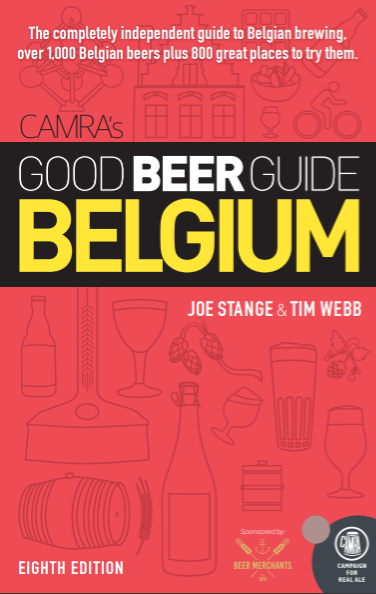I get a kick out of reading the winners at events like the World Beer Cup in Chicago. Everyone's got their favorite teams to support.
For example, I'm pleased to see Boulevard pick up a gold for its new Pilsner (Category 35: American-Style Specialty Lager, whatever that's supposed to mean), although I haven't had the chance to try it yet. And I was recently blown away by the Ballast Point Sculpin IPA (Category 90: International Pale Ale, whatever that's supposed to mean), for its stunning fruity-hop aroma and flavor. The Sculpin meanwhile ducks the resinous bitterness that — for me — dashes the drinkability of so many otherwise tasty IPAs. More notably, Ballast Point picks up the Champion Brewery and Brewmaster award among small brewing companies. They and the other champions deserve warm congratulations. You don't get there without making lots of great beer.
I also like to see European beers win the European-style categories. Call me old-fashioned. And so I've got to stand up and applaud for Unertl, one of my favorite lesser-known German breweries, for winning two silvers (in Category 73: German-Style Pale Wheat Ale, whatever that's supposed to mean, and Category 74: German-Style Dark Wheat Ale, whatever that's supposed to mean). What's more, I've drunk more than my fair share of Unertl and can confirm that they are, in fact, German-style. That was a joke.
That was a joke.
Anyway. Ninety categories? Really? If you care, the most entered category was Wood and Barrel-Aged Strong Beer with 113 entries. In a sign o' the times, plain old non-strong Wood and Barrel Aged Beers got only 32. The least entered category? Only nine German-Style Sour Ales. Whatever that's supposed to mean.
The nonsensical category that most piques my interest, as I write to you from a Costa Rican hotel room: No. 38, Australasian, Latin American or Tropical-Style Light Lager. I'm not into acronyms, so let me spell out my rhetorical question: What The Fuck? And also: Why?
A thought occurs to me now: Style guidelines and competition categories are pointless unless we can have our fun in tearing them apart. I believe that is the main joy they bring to the world. If, and only if, that sport is part of their function can I personally support their existence in my hedonistic worldview.
With that in mind, Category 38 deserves to be torn about three or four new assholes. And I think that doing so would, in the short and long term, add more joy to the world. Stay tuned.
The snapshot was Mrs. Pilgrim's idea. Actually she wanted me to do a W sign for Winner, but I'd never even heard of that.
Sunday, April 11, 2010
Everybody's a Winner. Oh, Except That Guy, Over There. Sorry Dude. (cough)Loser(cough).
Subscribe to:
Post Comments (Atom)






I like the fairness of the competition, with a category like "International-Style Lager". Very diplomatically all-inclusive.
ReplyDeleteIn my competition, I'd have categories like "Kick-Ass Blonde Ale", "Really Fucking Awesome Yellow Beer with Lots of Bubbles" and "Would Totally Rock with Smoked Oysters".
Darin, I'd love to see any of those proudly boasted on a brewpub menu.
ReplyDeleteI also really like the idea of a beer competition solely based on which is best with various foods.
I agree with you about the humor of these categories at beer competitions. The one that sticks in my mind, and still makes me laugh out loud, is one that I saw at a GABF back in 2004: Category 13 - Beer with Yeast. To think that all those other categories were for beers made without yeast! Amazing. :-)
ReplyDeletehttp://www.greatamericanbeerfestival.com/past_winners.htm
What is the difference between an ""International-Style Lager" and International Lager? When did we become so dumbed down that we need "-style" to highlight the fact that it follows an adjective even one as stunned as "international."
ReplyDeleteAlan
A Good Beer Blog
Hmm. If a Belgian-style beer is so-called because it might not be actually Belgian, maybe an internatioal-style beer is so-called because it might not be actually international.
ReplyDeleteI think that style guidelines can be useful, for homebrewers trying to brew a determined beer. The BJCP gives some useful information about the history and technical aspects of some beer styles.
ReplyDeleteMaybe the description of the flavor is not so useful, specially if you have the oportunity to try some comercial beers of the style you are trying to brew.
It´s only a shame to read some "experts" say that, "the Paulaner Oktoberfes isn´t a good Oktoberfest because it doesn´t conform with the BJCP".
The BJCP "style" that bugs me to to no end is Saison, of all things. I'm saying there's no such thing as saison, but even more than most "styles," saison seems based on the history of where it came from rather than some preset group of guidelines to sum up present-day examples.
ReplyDeleteHere's a small section of the BJCP guidelines for saison aroma. Is it me or is this a bit conflicting?
". . .moderate to no herb, spice and alcohol aroma." followed 2 sentences later by "A moderate spice aroma (from actual spice additions and/or yeast-derived phenols) complements the other aromatics. . ."
(In one final bit of rant, they actually list La Folie as a commercial example?! Am I missing something there?)